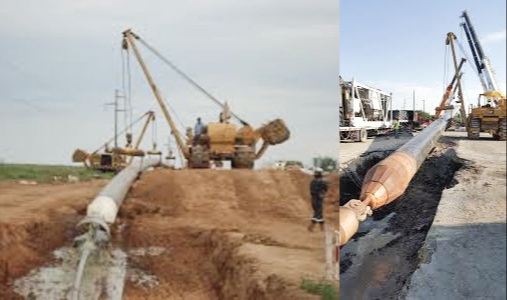Table of Contents
What Is Horizontal Directional Drilling (HDD)?
In this article, we will learn about Horizontal Directional drilling. It is also known as Directional Boring. If I talk about in simple terms, horizontal directional drilling, is a method of installing underground utilities such as pipes, conduit, or cables.

This method uses a drilling rig that is launched from the surface and it is a minimal impact technique that offers significant environmental benefits compared to traditional installation methods. It is commonly used in situations where conventional trenching or excavation is not practical or when minimal surface disturbance is required.
While the terms directional boring and HDD are often used interchangeably, they refer to slightly different things. “Directional boring” generally refers to small-scale drilling operations, small diameter bores, and crossing distances measured in hundreds of feet. In contrast, “HDD” refers to large-scale drilling operations, large diameter bores, and crossing distances measured in thousands of feet.
Method
Horizontal directional drilling is a method of installing underground infrastructure, such as cables, water lines, and gas lines, that is particularly useful in urban areas where traditional methods may be too disruptive or costly. This technique causes less traffic disruption and is generally more cost-effective. It is also used in situations where there is no access pit, or where the installation needs to go deeper or longer.
It is essential for the operator to have accurate information about existing utilities to avoid any damage to them. To ensure safety, various organizations and government agencies have established guidelines for directional boring. Additionally, organizations that promote trenchless technology have developed guidelines to standardize the method.
Process Description
The directional boring process is typically carried out in three steps. First, a small diameter pilot hole is drilled along a designated path. Next, the pilot hole is enlarged to a diameter that will allow for the installation of the pipeline. Finally, the pipeline is pulled into the enlarged hole, creating a continuous segment of pipe that is only exposed at the two initial endpoints.
This process can be used to cross a wide range of surface obstacles, including roadways, railroads, wetlands, and water bodies of varying sizes and depths. It is suitable for many soil conditions, including clay, silt, sand, and rock. However, it can be challenging in situations where the soil contains large grains such as coarse gravel, cobbles, and boulders. Other subsurface conditions that can impact the feasibility of directional boring include excessive rock strength and abrasivity, poor rock quality, and rock exhibiting karst features.
Equipments Used In Horizontal Directional Drilling
Directional boring equipment varies depending on the length and conditions of the proposed crossing, as well as the properties of the pipeline being installed. For longer, more difficult crossings, large tractor-trailer mounted drills may be used in conjunction with other equipment such as a drilling fluid reclaimer and excavator. For smaller bores, smaller and more portable equipment may be used, and in some cases, no fluids are required at all. Different types of tooling, such as drill bits and reamers, are also available for different soil and rock conditions, and the method of advancement varies depending on the type of soil or rock.
Summing Up
Horizontal Directional Drilling (HDD) is a trenchless method for installing underground pipes, conduits, or cables using a surface-launched drilling rig. It is suitable for a variety of soil conditions and jobs such as road, landscape and river crossings. HDD is a good option when trenching or excavating is not practical, and it should be considered when the pipe is 5 ft deep or more, below the water table, in unstable soil, congested with other utilities, or in an urban or residential area. Trenchless technology has advantages over traditional methods, such as minimum surface disruption, lower costs, less equipment, manpower and fuel needed per meter of installation, and lower surface restoration costs.
FAQS
Q: What is meant by the term ‘Directional Boring’?
A: Directional Boring, also known as Horizontal Directional Drilling (HDD), is a method of installing subterranean pipelines or cables without causing major disruptions on the surface. The process begins by drilling a small pilot hole, then utilizing a steerable drilling rig to guide the bore in a precise direction to reach the intended location.
Q: Why is Directional Boring often preferred over other methods?
A: There are many reasons why Directional Boring is frequently chosen over other techniques, some of them are:
- Minimal surface disruption as it doesn’t require excavation.
- It can be executed in areas with limited access like urban neighborhoods or ecologically sensitive regions.
- It can be used to install underground utilities under obstacles such as roads, rivers, and existing infrastructure.
- It is faster and cost-effective than traditional excavation methods.
